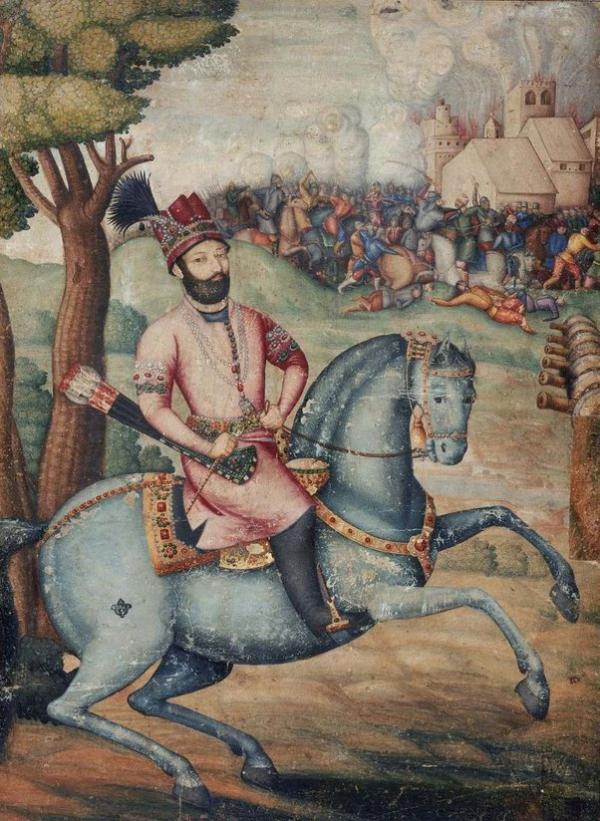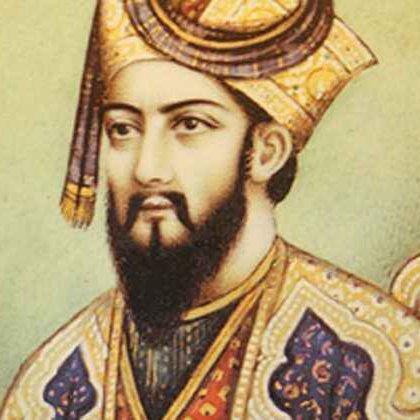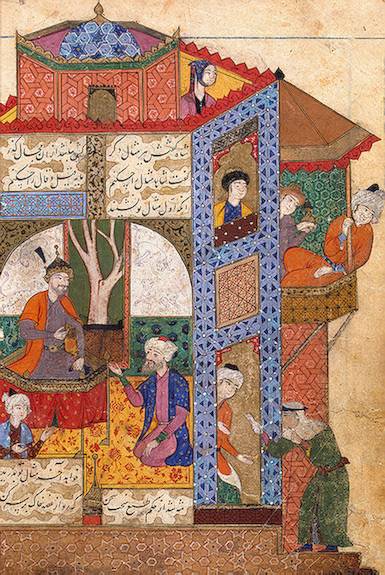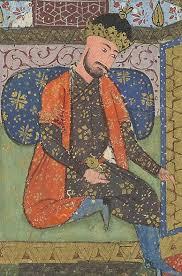Sultan Mahmud of Ghaznavi, the powerful king of Ghaznavi

 Sultan Mahmud Ghaznavi
Sultan Mahmud GhaznaviAn abstract of Sultan Mahmoud Ghaznavi's biography:
Full name: Abulqasem Mahmoud bin Nadim
Date of birth: 10th of Muharram 361 Hijri
Place of birth: Ghazni city in Zabulistan region
Father: Light weight
Spouse: Kausar Jahan
Children: Jalal Dawood Mohammad, Sultan Masoud Ghaznavi, Abdul Rashid Ghaznavi, Suleiman, Shajaa
Religion: Islam, Sunni
Died: 421 AH
 Biography of Sultan Mahmud Ghaznavi
Biography of Sultan Mahmud GhaznaviBiography of Sultan Mahmoud Ghaznavi:
Abul Qasim Mahmud bin Nadim was born on the 10th of Muharram in the year 361 AH in the city of Ghazni in the Zabulistan region. He was nicknamed Saif al-Dawlah, Fahim al-Dawlah, Sultan of the past, Parviz al-Molla, Ghazi, but he was known as Sultan Mahmud of Ghaznavi.
His father, Sabkatgin, was a member of the Samanian army of Turkish descent, who founded the Ghaznavid dynasty in Ghazni in 977. His father considered himself a subject of the Samanids and ruled over Khorasan and Mavalanhar. Sultan Mahmud Ghaznavi's mother was a daughter of Zabulistan nobles, that's why some sources introduce her as Mahmoud Zavali (“Mahmoud of Zabulistan”).
Mahmoud reached the Emirates after the death of his father Sabkatgin in 387 and after the victory of his brother Ismail. Muhammad and Masoud were two children of Sultan Mahmud and they were born from two different wives of Sultan Mahmud with a difference of a few months in age. Little information is available about Muhammad's mother, but Masoud's mother is not named, only in Beyhaqi history she is mentioned as Sultan Masoud's mother.
Mohammad Tabi had a poetic nature and was a weak person, but unlike Sultan Masoud, he was very powerful and belligerent. Mahmoud Ghaznavi died in Ghazni on 23 Rabi al-Thani of 421 AH, and after his death, he was introduced as Amir Ghazal.
 Biography of Sultan Mahmud Ghaznavi
Biography of Sultan Mahmud GhaznaviMahmud Ghaznavi's accession to the throne:
As mentioned, in 387, Sultan Mahmud's father died on the way back from the capital to Ghazni, and at that time Mahmud was managing affairs in Khorasan. When Sabaktekin's body arrived in Ghazna, according to his will, Ismail, his youngest son, became the ruler, but Mahmud did not accept this issue and with the help of his uncle Baghrajaq and his other brother Nasr, he went to war with Ismail and finally managed to get the government.
Government actions of Mahmoud Ghaznavi:
Sultan Mahmud of Ghaznavi defeated the famous generals of the Samani state after coming to power, and also took Sistan out of Ahmad Safari's hands. After that, the people of Khwarazm united against Mamun, who was the son-in-law of Mahmud, and killed him, and then conquered there.
The crimes of “Khalaf bin Ahmad” had brought the people of Sistan to the levels, that's why Sultan Mahmud of Ghaznavi asked for help, and he, who was waiting for such an opportunity, attacked there and besieged the Taq Khalaf fortress. Khalaf surrendered after four months of resistance and Sistan was captured by Mahmud in Safar 393.
Regarding Khwarazm, which was the land of Khabwa, it is located across the river, and Sultan Mahmud attacked that area under the pretext of avenging the blood of Abu al-Abbas Mamun bin Muhammad sahib Jarjaniyya and saving his sister. defeated the army belonging to Khwarezm and finally managed to enter Khwarezm on the 5th of Safar al-Muzaffar 408.
 Government actions of Sultan Mahmud Ghaznavi
Government actions of Sultan Mahmud GhaznaviReligion of Sultan Mahmud Ghaznavi:
Sultan Mahmud showed extreme prejudice towards the Hanafi religion and severely killed Ismailis and Shiites. He was a rich and greedy man who looted the wealth of other countries in his wars.
His numerous campaigns to India led to the acquisition of many spoils from the temples and idols of this country. Also, the famous city of Somnath on the west coast of India was attacked by Sultan Mahmud. However, it is worth mentioning that some areas of India were conquered by a Muslim for the first time.
Between the years 392 and 416 AH, Sultan Mahmud had several campaigns to different parts of India, and in these 24 years, apparently with the intention of Jihad against the infidels of India, but in practice, he fought many wars for the honor of this land. Since the attack on India was after the fifth year of his reign, the date of the beginning of his reign is 387 AH.
Literature and art of Sultan Mahmud Ghaznavi:
Sultan Mahmud had a poetic nature, so he paid a lot of attention to poets and organized meetings for them with his presence. It is said that four hundred poets visited his court. Sometimes he was found in the company of talented poets either in his palace or in the royal garden. He was often generous to them and rewarded them incessantly according to their talent and worth.
Sultan Mahmud entered Ray in 420 AH and took precious treasures from this city. He also burned the great library of Majdal Doula as one of the lost books of astronomy and wisdom and destroyed the government of Diyalmere.
 Sultan Mahmud of Ghaznavi and the importance of art and literature
Sultan Mahmud of Ghaznavi and the importance of art and literatureCharacter of Sultan Mahmud:
Sultan Mahmud presented himself as the shadow of God himself on earth, an absolute power whose will was asserted as law. He paid close attention to details in almost all cases and personally supervised the work of the court and every government department, which is a strong reason for his countless success.
He kept a close eye on the activities of the highest statesmen of his empire, especially the military commanders, because they could not bear to mistreat the common people, and his intelligence apparatus provided him with accurate reports. Sultan Mahmud chose all his ministers without the advice of his Grand Vizier, however, he had to be consulted every now and then because his religion considered it good for him. From the quotation
The famous sayings of Sultan Mahmud:
Ministers are the enemies of the king, one should be careful not to overstep their bounds….
Sultan Mahmud had many spies, whom he called Musharraf, and they were active throughout his empire, under his supervision, in the special departments of the court.
Sexual orientation of Sultan Mahmoud Ghaznavi:
Some documents also mention the poems of Ain al-Qadat Hamdani, Attar and Maulavi about the homosexual relationship of Mahmoud Ghaznavi with Ghulam Turk, named Malik Ayaz.
 About Sultan Mahmoud Ghaznavi's sexual orientation
About Sultan Mahmoud Ghaznavi's sexual orientationDeath of Sultan Mahmud Ghaznavi:
Sultan Mahmud contracted tuberculosis in his last battle and became thinner day by day. When he traveled to Ray, the severity of his illness increased, however, he came to Khorasan and settled in Balkh. After that, he came to Ghaznin in the spring of 421, and after a few days, he passed away on 23 Rabi Al Alul 421 at the age of 61. After his death, his son “Masoud” relied on power. His tomb is located in Ghazni, Afghanistan.
Sultan Mahmud Ghaznavi's empire was ruled by his successors for 157 years. The expanding Seljuk Empire moved mostly in the west of the Ghaznavids. The Ghaznavids were able to in 545 AH; They captured Ghazni and Muezuddin Muhammad Ghori Khosrow Malik defeated the last Ghaznavid sultan in Lahore in 583 and overthrew the great Ghaznavid empire.
The territory considered for the Ghaznavid Empire at the end of Sultan Mahmud's reign was from Ray in the west to Samarkand in the northeast, the Khazd Sea in the northwest, Yemen in the southwest, and India in the southeast.
compilation: Part of the cover biography






